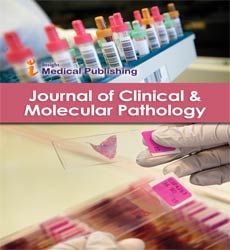ISSN : 2634-7806
Journal of Clinical and Molecular Pathology : Open Access
Adverse Childhood Experiences as the Background of Many Hepatic and Gastrointestinal Disorders.
Department of Infectious Diseases, Saint Laszlo Hospital, Budapest, Hungary
- *Corresponding Author:
- Makara M
Department of Infectious Diseases, Saint Laszlo Hospital, Budapest, Hungary
E-mail: mihalymakara@gmail.com
Received date: July 09, 2021; Accepted date: July 23, 2021; Published date: July 30, 2021
Citation: Makara M (2021) Adverse Childhood Experiences as the Background of Many Hepatic and Gastrointestinal Disorders. J Clin Mol Pathol Vol.5 No. 3:36.
About the Study
Adverse childhood experiences (ACEs) are associated with many kinds of addictions, risk behaviors, psychological and mental disorders, and many leading causes of death. Our aim was to investigate the prevalence of ACEs among patients suffering from various liver diseases. We used the WHO international questionnaire (ACE-IQ) and additional questions about addictions, suicide attempts, education, and employed various psychological tests. We counted the serious adverse experiences according to the recommendation of WHO. Early adverse life events are associated with the irritable bowel syndrome. Exposure to EALs as assessed by the Adverse Childhood Experiences questionnaire is associated with greater disease prevalence, but ACE has not been studied in the disorders. Study aims were to Estimate the prevalence of EALs in the IBS patients using the ACE questionnaire and to determine the correlations between ACE and Early Trauma Inventory Self Report-Short Form scores to confirm it is validity in IBS. To examine the relationship of the adverse childhood experiences (ACEs), including abuse, neglect, and the forms of household dysfunction, to the risk of liver disease by assessing the role of the risk behaviors, such as substance abuse and the high-risk sexual activity, as mediators of the ACEs–liver disease relationship.
644 tests were analyzed: 212 addicted patients (69 formal iv. drug users with hepatitis, 11 people with alcoholic liver diseases, 85 people who were undergoing treatment at the National Institute of Psychiatry and Addiction and 47 people who were undergoing treatment at an addiction treatment foundation and 432 control subjects (for example 21 patients with transfusion acquired hepatitis C, 114 university students, 50 job seeker, 57 people who went to see their doctor to renew their license, etc.). The average of ACEs was 2.5 among controls, while 4.4 among addicted patients (2.4 among patients with alcoholic liver disorders, 4.9 in the group of iv. drug users and 4.2 among other addicted patients). There were 91 people who gave no positive answers to serious adverse childhood experiences. Only 11 (12%) of them were from the addicted group, only one of them (1%) had a suicide attempt, and 26 (28.6%) of them had an university degree. With rising ACE counts the percentage of addicted patients and the number of people with suicide attempts were raising in a graded fashion, while the percentage of people with high level education decreased. There were 121 people who had 6 or more severe ACEs, 69 (57%) of them were from the addicted group, 51 (42.1%) of them had a suicide attempt, and 19 (15.7%) of them had an university degree. In many gastrointestinal diseases symptoms are rising according to the number of ACEs including frequent vomiting, diarrhea, and diarrhea alternating with constipation.
Conclusion
The ACE questionnaire is a useful instrument to measure the EALs in IBS based on its use in large studies, its ability to measure the prevalence across different EAL domains, and its correlation with the symptom severity. High scores of ACEs are found in addicted patients and especially high in iv. addicts. Many gastrointestinal symptoms are also correlated with ACEs.
Open Access Journals
- Aquaculture & Veterinary Science
- Chemistry & Chemical Sciences
- Clinical Sciences
- Engineering
- General Science
- Genetics & Molecular Biology
- Health Care & Nursing
- Immunology & Microbiology
- Materials Science
- Mathematics & Physics
- Medical Sciences
- Neurology & Psychiatry
- Oncology & Cancer Science
- Pharmaceutical Sciences
